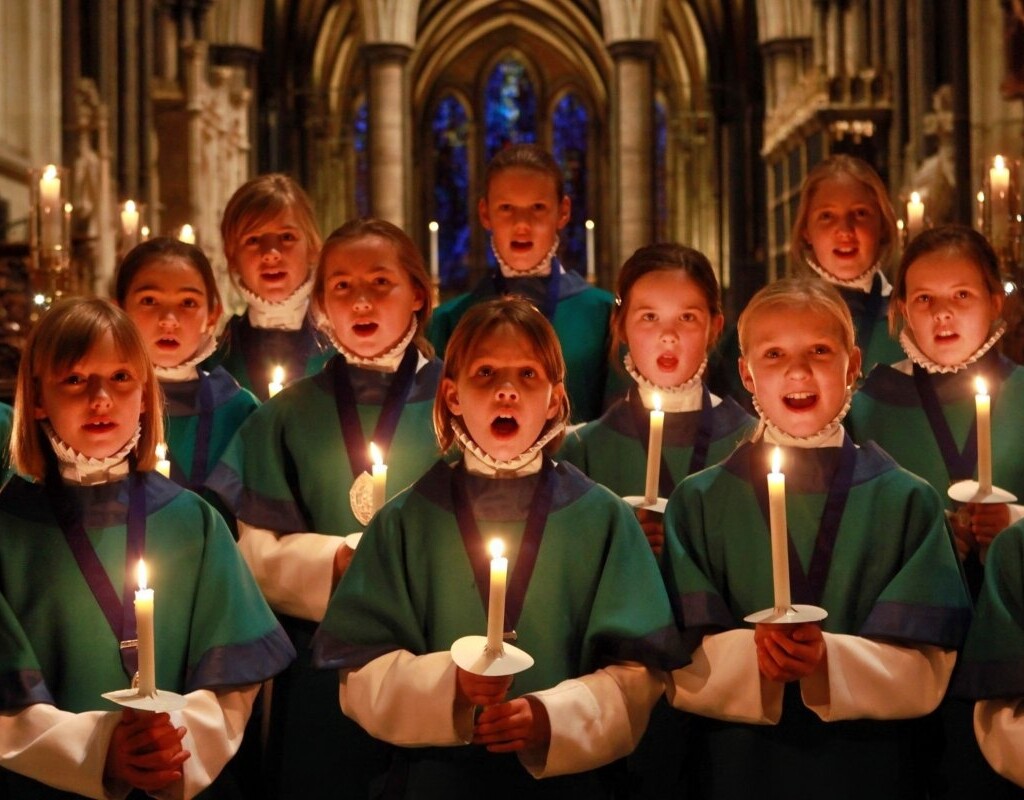A style of music known as “Christmas Carols” resurfaces at this time of the year when the Christmas air is everywhere. Few know the origin of the melody, even though it is frequently played during these sentimental dates.
History and origin of the Christmas carol
One of the earliest forms of common Castilian lyric poetry was the Christmas Carols, a short strophic song with a refrain that usually followed the scheme aBccaB.
Normally, it was intended to be performed by a soloist accompanied by two or three instruments, with the main melody in the upper voice.
This genre first appeared in the 15th century to designate a vulgar song constructed from responsorial strophic forms such as the ballata, the zejel, the virelai, or the cantigas paralelísticas.
Songbook of Stúñiga
The Songbook of Stúñiga (ca. 1458), which takes its name from Lope de Stúñiga and compiles the work of the poets of the court of Alfonso V the Magnanimous of Aragon, is the first writing in which the word “Christmas Carols” is recorded.
Its poetry is generally elegant and concepts and the Chanssonier d’Herberay (ca. 1463), later known as the Songbook of the Colombina, owes its name to the fact that it was discovered in the Sevillian library of Fernando Colon, which is still preserved, along with a hundred other works from the late 15th and early 16th centuries.
The Songbook of the Palace, which contains 551 compositions, of which we have preserved some 460, is one of the most significant Spanish musical sources from the time of the Catholic Monarchs, together with the Musical Songbook of the Palace.
Juan del Encina
He was the most representative author of this genre at the end of the 15th century.
In his compositions, he used binary time and, for those with a very popular theme, ternary time. By this time, the Christmas carol was already a musical and poetic form that alternated couplets and refrains.
In the 16th century, the Christmas carol gradually shifted its focus from courtly love to religious themes, as ecclesiastical authorities began to think that it would be convenient to include compositions in Spanish in the liturgy as a means of introducing the populace to the mysteries of the Catholic faith.
Thus, at the beginning of the 17th century, it began to be used in the responsories of the matins of the main liturgical feasts, such as Christmas, Hábeas Christi, Assumption, local saints, Epiphany, Trinity, etc.
Consequently, writing carols would no longer be just a requirement to become a chapel master, but would become one of the main compositional responsibilities of the chapel master for the major feasts of the liturgical calendar.
The performances of Christmas carols
Despite this, carol performances increased throughout the seventeenth century from conservative institutions, they increased in frequency.
These restrictions were because it was increasingly common to perform carols as dialogical songs that imitated the shepherds’ commotion at the mysterious birth of the Christ child.
Themes such as this served as a great basis for humorous parodies in which the corresponding archetypal figures of various nationalities were amused.
The seventeenth-century carol has a high level of formal and technical complexity, increasing the number of voices even up to eight distributed in two choirs located in different places of the cathedral and accompanied by instruments such as harp, violin and organ.
Leaving aside the formal writing for this genre, the carols of this century have come down to us in handwritten drafts and loose sheets for each voice.
Italy exerted a great influence in the 18th century.
In terms of music, we are not only talking about opera or zarzuela, but also the carol.
The recitative style, the arias da capo and the compositional style of the Italian opera seria were the Italianizing influences on the carol that caused an increase in the orchestral staff of the cathedral musical chapels, a greater demand when performing these compositions.
As well as an excessive musical investment on the part of the cathedral centers that did not give profitable practical results.
Carols would continue to be impregnated with the popular traits of the previous century, which is what led to their use in liturgical contexts, but this time with educational objectives.
Throughout time, the introduction of theatrical elements in churches was done to arouse emotions in the populace that were very different from the contemplation of the divine achieved by the previous polyphonic style.
Father Antonio Soler, Antonio de Literes and Jose de Torres were important composers of this period.
Due to these Italianizing influences, the Christmas carol was officially banned from the liturgy at the end of the 18th century. By the beginning of the 19th century, Gregorian responsories had taken their place.
As a result, the entire patrimony of carols was preserved, at best, in the cathedral archives, much of which has not yet been made public.
Christmas carol
Nowadays, when we use the term “Christmas carol”, we are referring to the Christmas song that has roots in various popular cultures of all national borders.
The Christmas carol that we usually listen to at this time of the year has a simple melodic and harmonic structure and is usually performed by children’s choirs. These songs usually have simple melodies and minimally complex harmonic structures.
As proof, advertisements use carol music at the end of November, significantly lengthening the Christmas season and promoting consumption during this time. Nowadays, the use of Christmas carols is linked to the promotion of consumerism typical of these dates.
Related posts





